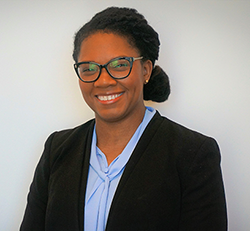
Release of National Sample Survey of Registered Nurses Data

HRSA has released data collected from the National Sample Survey of Registered Nurses (NSSRN). This survey data is the principal source of information on the nursing workforce, the largest group of health care professionals.
The NSSRN informs educators, health workforce leaders, and policymakers of developments in the nursing workforce. This comprehensive data set assists in developing strategies that address present-day healthcare challenges and the evolving nursing workforce needs. Since 1977, the National Sample Survey of Registered Nurses (NSSRN) has been the cornerstone of nursing workforce data.
|
Cervical Health Awareness Month

January is Cervical Health Awareness Month. Each year, over 13,000 women in the U.S. are diagnosed with cervical cancer; however, the disease can be prevented with vaccination and appropriate screening.
Did you know that nearly 4 million patients received cervical cancer screening from HRSA-funded health centers? Visit a HRSA-funded health center near you to get screened.
Join us for the next session in HRSA’s Data for Decision-Making Speaker Series focused on cervical health. Speakers from the Centers for Disease Control and Prevention, the American Cancer Society, and a health center will share cervical health surveillance data, as well as promising practices and experiences promoting cervical health.
|
HRSA Expert Warns of Clinician Burnout

Giving voice to federal researchers who say burnout in the health professions is on the rise, HRSA's Dr. Torey Mack told attendees at a joint summit last month that the annual economic cost associated with rising turnover and reduced clinical hours is now about $7,600 per employed physician each year.
Research shows that between 2011 and 2014, burnout increased by 9 percent among physicians, while remaining stable in other U.S. economic sectors, and that U.S. nurses report a similarly high incidence of exhaustion. The cost burden could be as much as $6.3 billion per year to the American health care system. Read more about clinician burnout. |
The Global Health Care Crunch

Tonya Bowers, Deputy Associate Administrator of the Bureau of Primary Health Care, told French health officials last month that the U.S. health center population has more than doubled to 28.4 million people since the administration of President George W. Bush, and the number of health center locations has more than tripled to some 12,000.
But despite strong bipartisan support for the program and an overall growth rate of 176 percent since 2001, health services in U.S. rural areas remain "fragile." And demand for new health center clinics is overwhelming. "We always get more applications than we can fund," Bowers told Celine Jaeggy of the French embassy's office of Labor, Health and Social Welfare, which requested the meeting with HRSA staff. Bowers noted that only one of about every six proposals for 500 new health center sites got agency financing in a recent grant competition. The pent up demand, experts say, is an increasingly familiar phenomenon worldwide. |
Blog Post: States Continue to Enact Legislation to Address Health Care Workforce Shortages

In an effort to address health care workforce shortages, 54 bills from 30 states were enacted into law in 2019 related to behavioral health providers, physician assistants, nurse practitioners and oral health providers.
The National Conference of State Legislatures discussed the legislation in a recent blog post outlining scope of practice legislation. Their work is supported through HRSA’s cooperative agreement with National Organizations of State and Local Officials (NOSLO).
|






















.jpg)









No hay comentarios:
Publicar un comentario